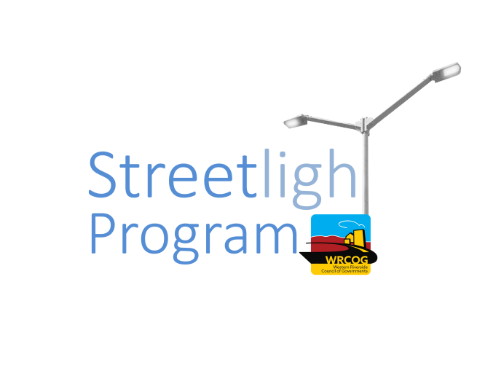Regional Streetlight Program
EnergyOverview
The Regional Streetlight Program was designed to facilitate the sale of over 50,000 utility-owned streetlights to 11 local governments in Western Riverside County, and provides streetlight LED conversion and maintenance services. As one of WRCOG’s most extensive energy efficiency programs, this initiative will generate up to $70 million dollars over 20-years in net savings and reduce annual energy use by 17.4 million kWh. In addition to cost savings and reducing energy consumption, WRCOG secured and will disburse over $3.6 million dollars in utility rebates to the participating agencies.
Participating Agencies
- City of Eastvale*
- City of Hemet
- City of Lake Elsinore
- City of Menifee
- City of Moreno Valley*
- City of Murrieta
- City of Perris
- City of San Jacinto
- City of Temecula*
- City of Wildomar
- Jurupa Community Services District
*This public agency has exited the Program and therefore procures and/or provides its own streetlight maintenance services.
Before and after example of a LED retrofit on a residential street in the City of Murrieta.

Program Metrics
- Streetlights Purchased From Utility: 49,057 lamps (48,759 poles)
- LED Streetlight Conversions: 53,905 lamps (53,587 poles)
- Annual Utility Savings: $5,004,837.73
- Annual Energy Savings: 17,422,681.14 kWh
- equivalent of 2,086 residential homes annual electricity use
- equivalent of emissions reductions from taking 2,661 cars off the road each year
- LED Rebates Back to Agencies: $3,639,693
Presentation of Rebate checks to the Cities of Eastvale and Murrieta.

Some benefits to converting the streetlights to LED are:
- reduced electricity bills
- lower energy consumption
- improved public safety and roadway visibility
- less light pollution
- even light distribution, with fewer dark areas
- longer lifespan
WRCOG Streetlight Viewer
WRCOG maintains a GIS layer and dataset to assist participating agencies with viewing their streetlights and associated asset information. Maps and data are for reference purposes only, features are approximate, and are not necessarily accurate to surveying or engineering standards
Streetlights in the News
Check out recent news articles featuring the Regional Streetlight Program.
- WRCOG Creates Brighter Future by Improving the Nighttime Sky
- Southern California Cities Install Streetlights of Current by GE
- Murrieta Completes Streetlight Retrofit, Saving Estimated $6.5M
- City of Hemet Begins LED Streetlight Retrofit Saving Millions
- Menifee Begins LED streetlight retrofit program to increase energy efficiency and reduce long-term operation cost
- Temecula begins process to retrofit streetlights
- Twitter Post: Congratulations to the City of Eastvale for receiving their LED Streetlight Retrofit Rebate for $413,918
Resources
- ANSI/IES RP-8-25 Recommended Practice: Lighting Roadway and Parking Facilities. This Recommended Practice is a compilation of lighting design techniques and criteria, all offered for quality roadway lighting solutions and is intended as a basis for the design and installation of roadway lighting and associated systems.
- California Street Light Association. The California Streetlight Association (CALSLA) is a statewide association that is committed to maintain fair and equitable streetlight electric rates and facilities charges, and disseminating streetlight related information.
Still Have Questions?
Contact WRCOG Staff to further assist you!




